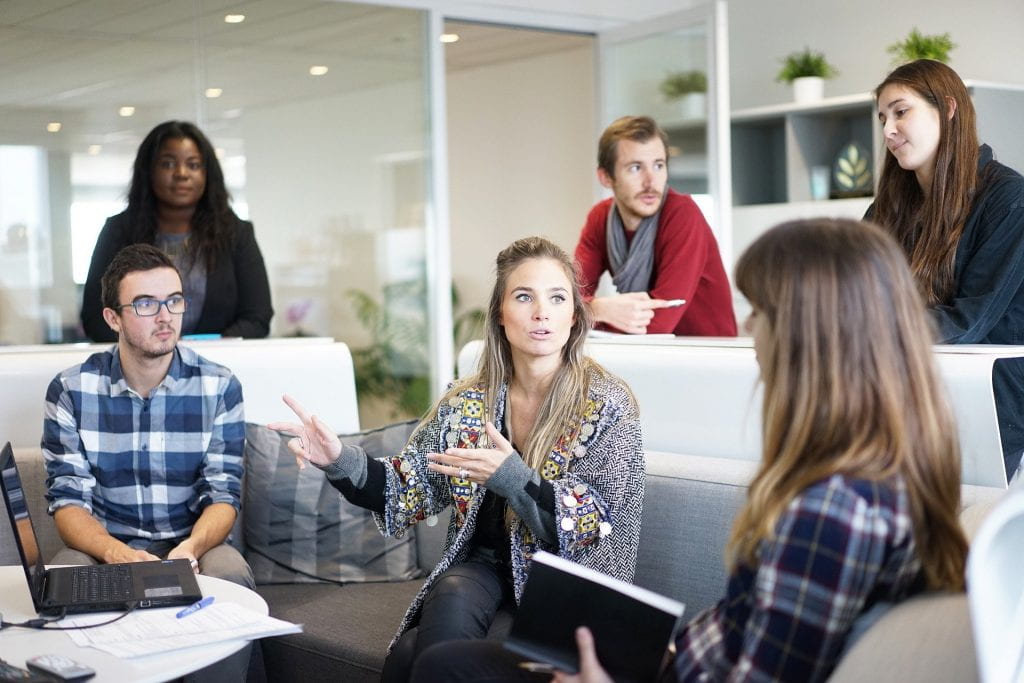With reference to recent posts on the event last autumn at Orangebox on SmartLearning, it reminded me just how important this subject really is, and its relevance for City, with planning for the creation of more large lecture theatres to cater for ever growing numbers of students. Often identified as iGen, these are our students, a generation born after 1995 who experience our world with universal access to the internet and personal devices that many of us older generations never had.
So a better question for this blog post would be, ‘What Type of Education Should We Design for our Students?’
The main challenge of working in the design and development of learning environments is just how slow some institutions are to change in their approach to the delivery of teaching and their attitude to learning, some have great initiatives and some just replicate the traditional didactic delivery. It is easier to continue with what is known rather than adopt a more student-focused and progressive stance. I find that I am having the same conversations and lively discussions with academics and fellow professionals, both inside HE and with those on the outside, such as architects, furniture designers, consultants and technology managers.
Without meaning to sound hypocritical, perhaps we should first ‘slow down to speed up’, or ‘linger longer’ as I heard the President of RIBA say, we need to stop and think about what is important for our students’ future in terms of the learning experience. To help us to understand how the vision for education could change and inform our thinking, we could begin with this key quote from Futurelab;
“We need to start, then, by asking not ‘what buildings do we want?’ but instead ‘what sort of education do we want to see in future?’ We need to ask not ‘how many classrooms do we need?’ but ‘what sorts of learning relationships do we want to foster? What competencies do we want learners to develop? What tools and resources are available to us to support learning?’ Rudd et al. 2006
This reference is useful in helping us to re-think the type of educational experience offered in higher education and how that impacts on graduates moving into the workplace.
“Research from Gallup shows there is a huge gap between chief academic officers of colleges and universities who say they prepare students for the workforce (96%) and only 11% of corporations that say they do” Hurley, Orangebox 2019 Link to Steelcase site
It’s common to hear educationalists and business writers talk about the 4 C’s, communication, collaboration, critical thinking and creativity. We know that industry needs new recruits to have these skills, so it follows that our learning and teaching approach should allow students to develop these competencies whilst in higher education. The HEA calls them ’21st-century skills’ alongside literacies and character qualities.

So why are building large lecture theatres? not just for the ever growing [maybe not for much longer?] numbers of students. Some argue it is a convenient method of information dissemination and a traditional tool for the mass delivery of education since 1050! But is it effective? Do students benefit? Do staff enjoy standing in front of hundreds of passive students? Do our Estates departments think its cost-effective? Why do universities keep building these large and very expensive facilities that regularly see student attendance drop off over the weeks from the start of term. My own limited observations of lectures timetabled for 270 students have been less than 40% of the total cohort.
Many students feel that lectures are dull and kill off any enthusiasm that they may have held for their course. Check this link to research that finds that STEM undergraduates who attend traditional lectures are 1.5 times more likely to struggle than their peers in classes that have a more stimulating, active learning pedagogy.
This video is from an interview with Professor David Helfand from Canada, who sums up powerfully how students actually learn and puts the argument against lecture based teaching succinctly.
A serious argument often used against more student-centred active learning, such as flipped classroom and blended learning, is that of cost. A large lecture delivered by one academic is cheaper than employing more staff to deliver smaller seminar based classes, as well as the cost of developing more digital resources for students to engage with prior to discussion and group based work in class. However as Professor Helfand answers, its about priorities. While its possible to design lessons to cater for large group teaching, it’s also about changing the curriculum towards a process of problem and enquiry-based learning, engaging students in that process. Not to mention that our brains just aren’t wired up to be passive receivers of information.
The final word is from a prominent advocate of active learning, Eric Mazur, a professor from Harvard University, who has championed the flipped classroom approach since changing his practice and found that students learn much more effectively outside of the lecture theatre.
“Most classrooms—more like 99.9 percent—on campus are auditoriums,” Mazur says. “They are built with just one purpose: focusing the attention of many on the professor. The professor is active, and the audience is just sitting there, taking in information. Instead, you could get away from the auditorium seating and set up classrooms like you see in elementary schools, where four children sit around a square table facing each other, and you give them some kind of group activity to work on: that’s active learning. It’s no accident that most elementary schools are organized that way. The reason is, that’s how we learn.” Lambert, 2012.
My view is that universities should, and could be developing a ‘portfolio’ of learning spaces, where academics can choose and book the most appropriate environments for their specific learning and teaching activities. Estates departments can then create spaces that see improved utilisation and timetabling teams can direct those booking rooms into the most appropriate space for the activities of students. We need to make sure staff know where these spaces are and be more confident that the facilities will match their academic plans. At City there is a guide to selecting specific rooms here.




A very thought-provoking article thanks, James. I agree with all these arguments. We should start by asking the right questions before we begin to upgrade or redesign our learning spaces. Well said.
Thanks James very interesting. Indeed those questions are the ones to be asked first
You may have already seen this as it came out in june 2019. Tying in with our blogs on Scale up and Team based learning- this Guide for active learning from the Active collaborative learning project includes sample room specifications :
https://aclproject.org.uk/wp-content/uploads/2019/07/Guide-to-active-collaborative-learning.pdf